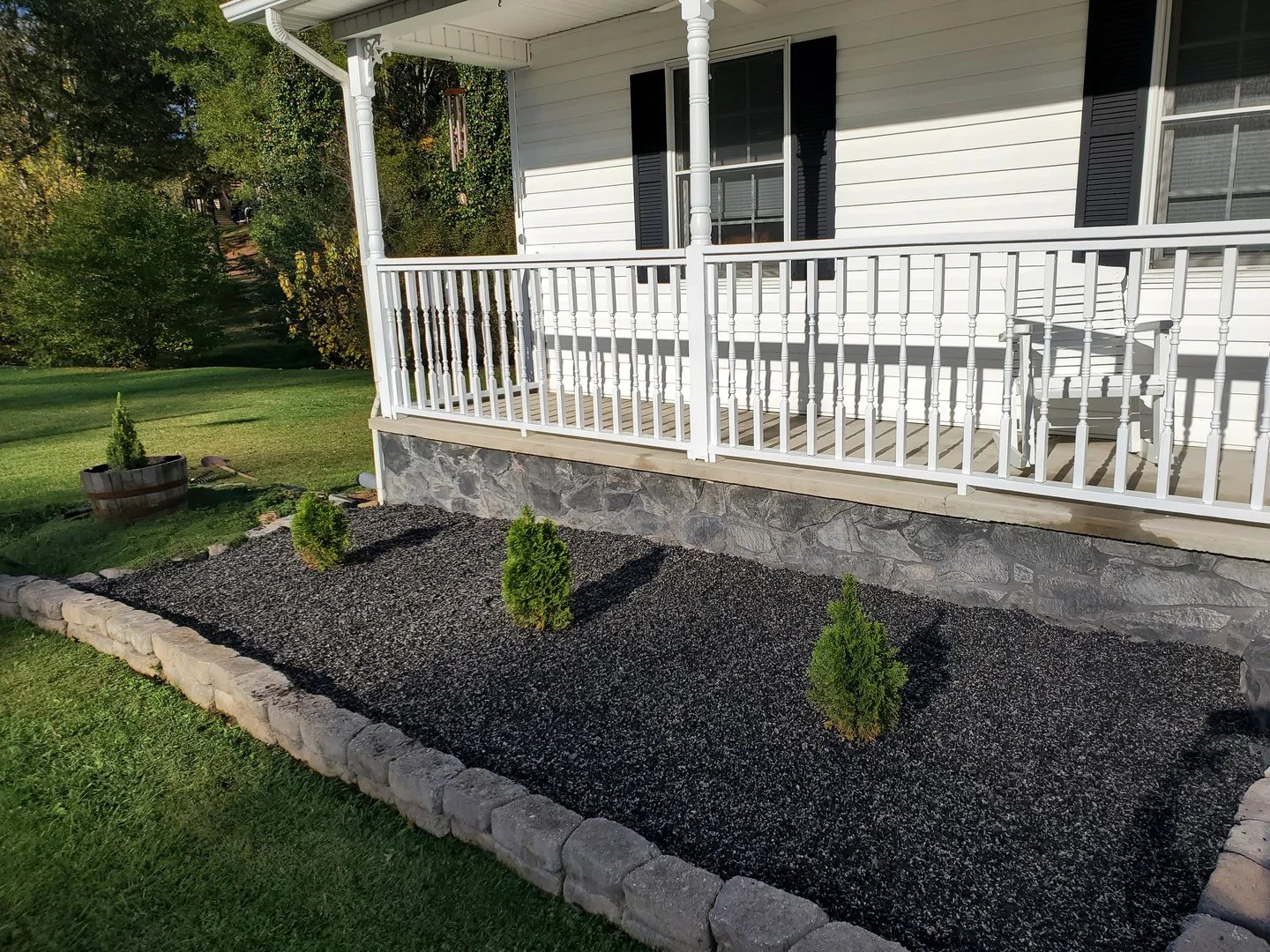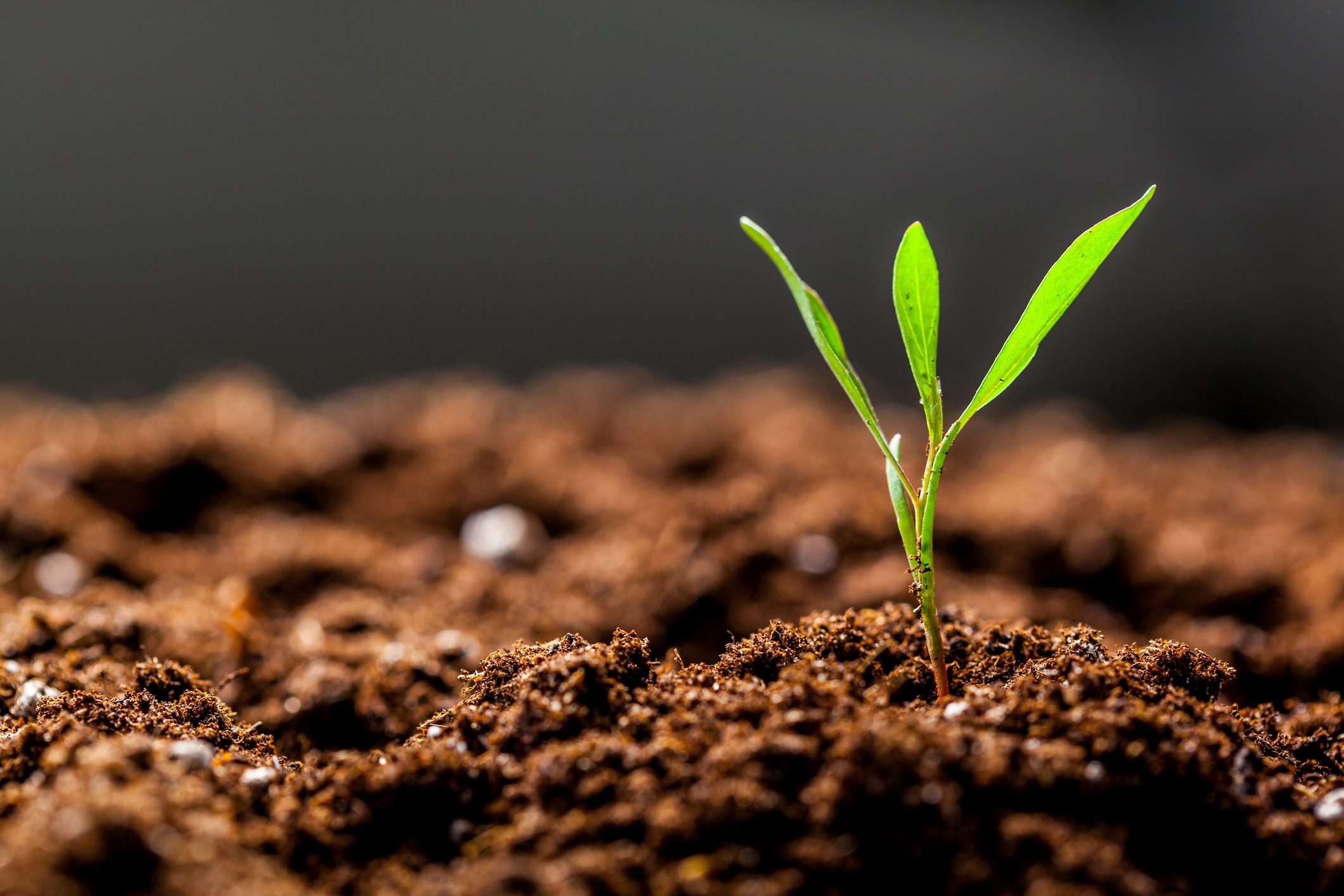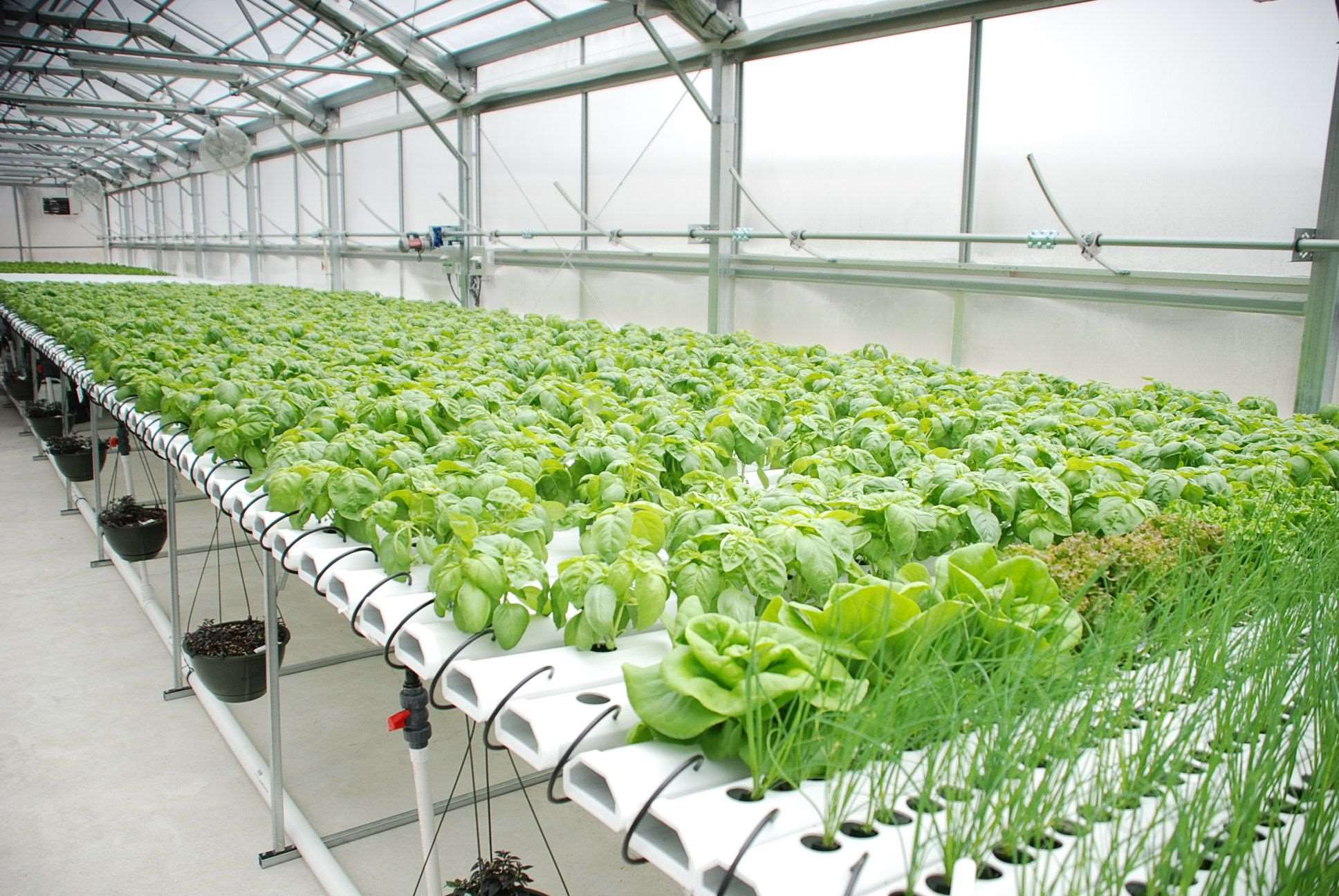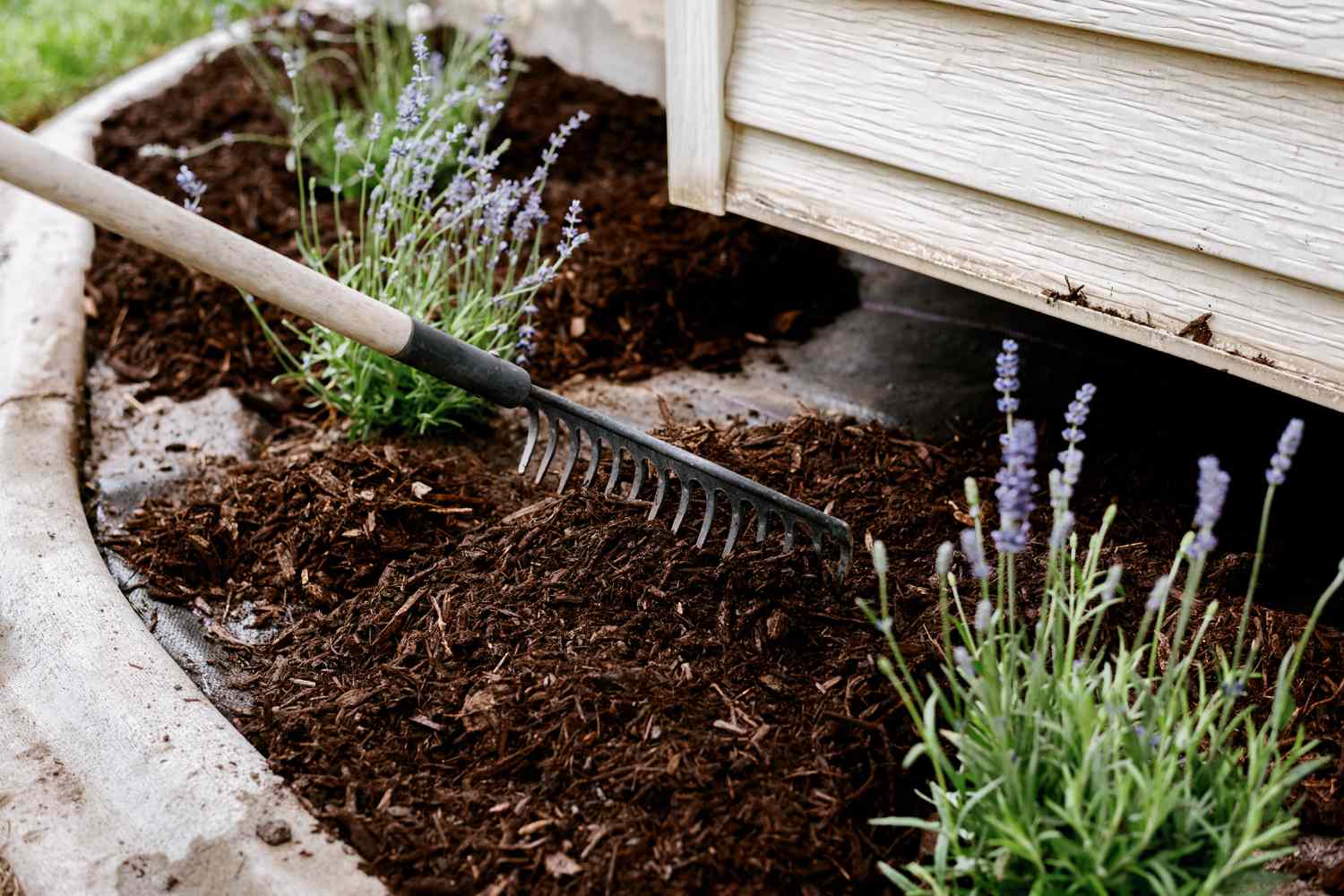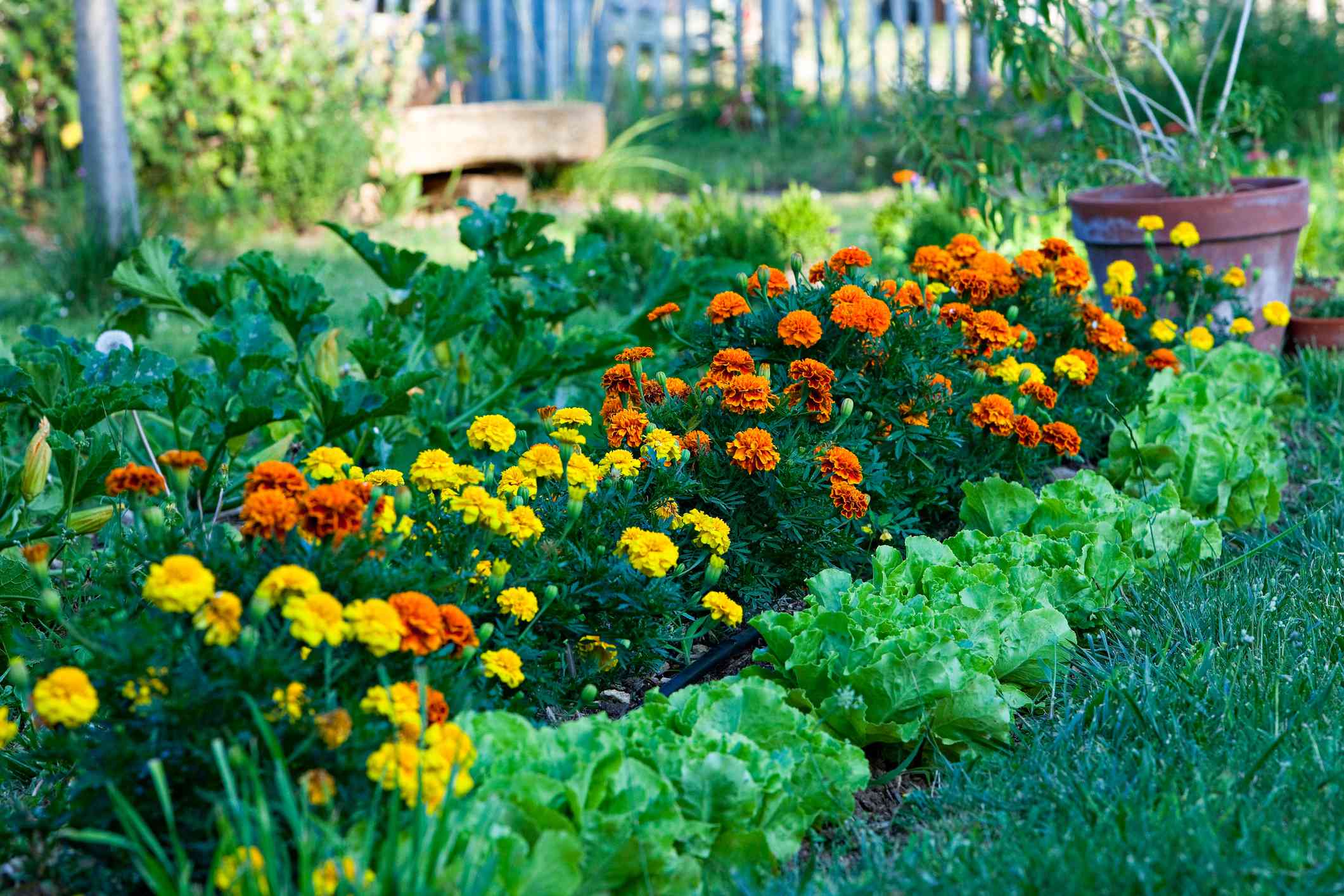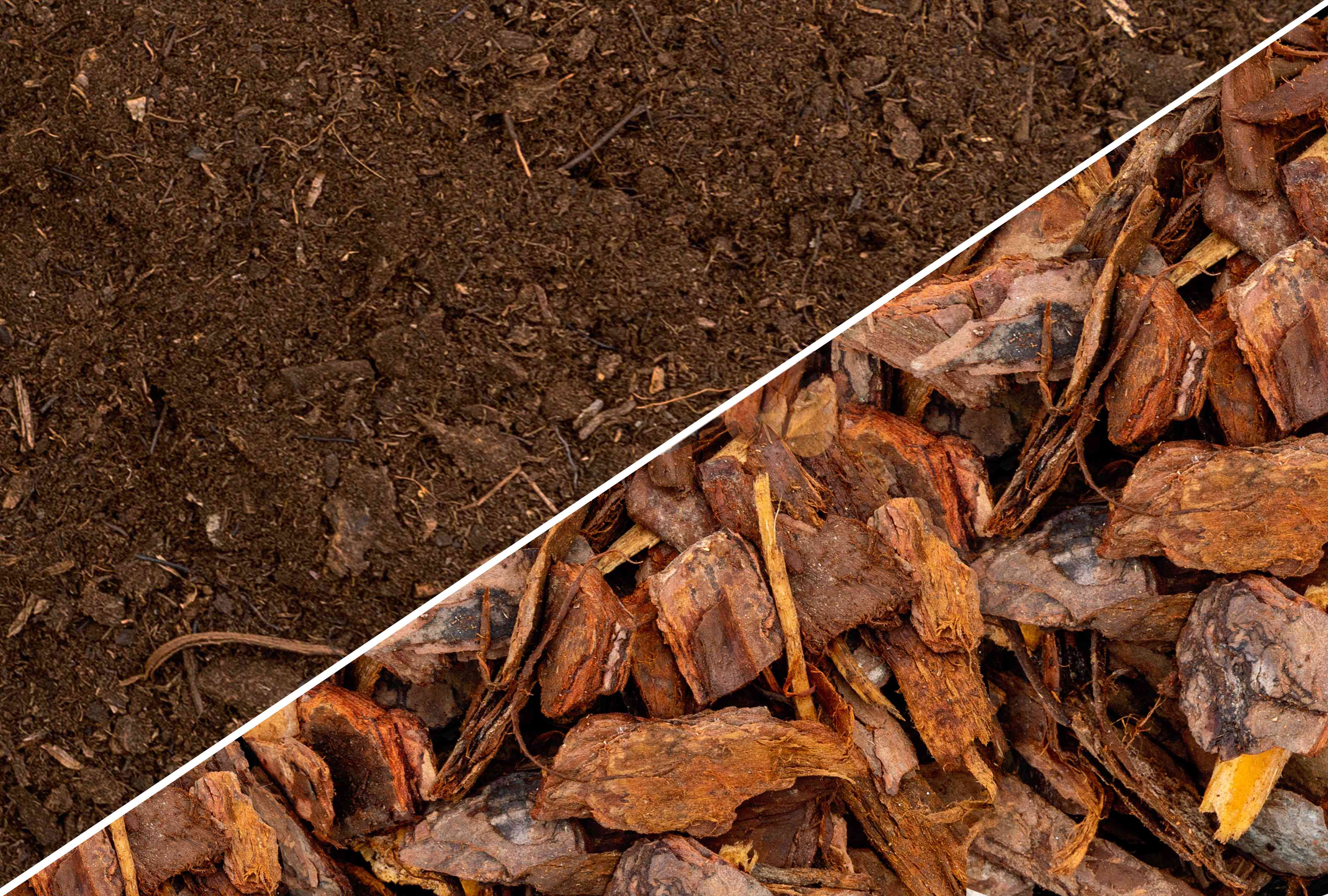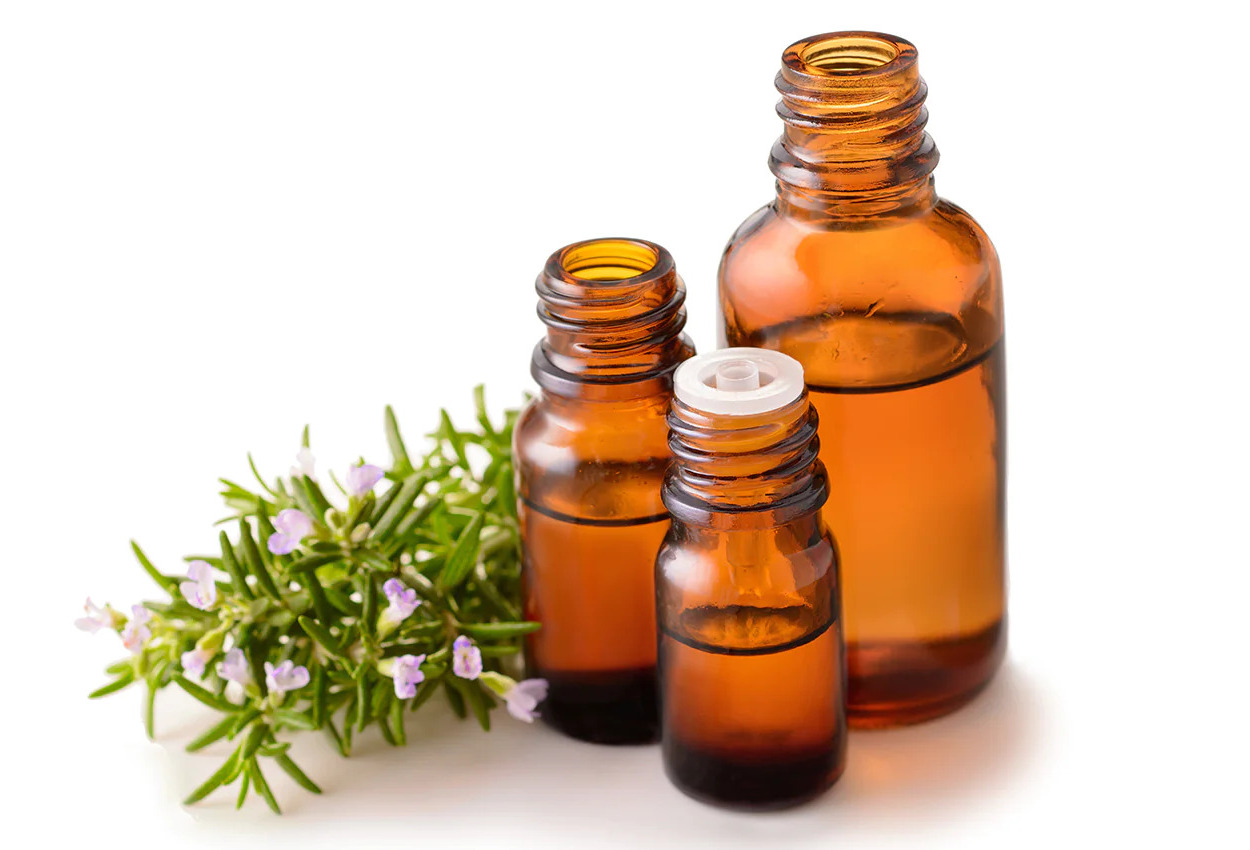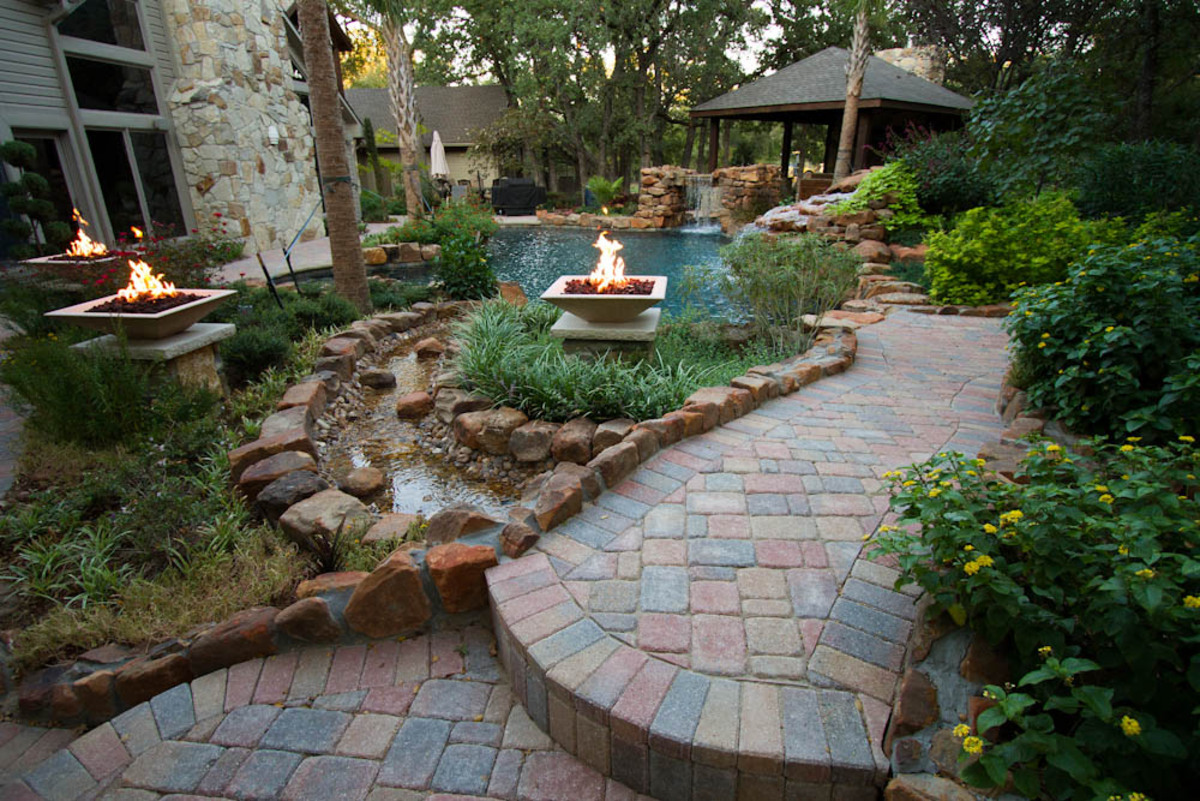Home>Gardening Tips and Tricks>Eco-Friendly Gardening>Which Mulch Is Best For Landscaping


Eco-Friendly Gardening
Which Mulch Is Best For Landscaping
Modified: February 8, 2024
Discover the eco-friendly gardening benefits of different types of mulch for your landscaping needs. Find out which mulch is best for your garden and start creating a sustainable outdoor space today.
(Many of the links in this article redirect to a specific reviewed product. Your purchase of these products through affiliate links helps to generate commission for Chicagolandgardening.com, at no extra cost. Learn more)
Table of Contents
Introduction
Creating a beautiful and sustainable landscape is a top priority for many homeowners and gardeners. One of the most effective and eco-friendly ways to achieve this is by incorporating mulch into your landscaping. Mulch not only enhances the visual appeal of your outdoor space but also provides numerous benefits for plant health and maintenance.
When properly applied, mulch acts as a protective layer that helps retain moisture, regulate soil temperature, suppress weed growth, and improve soil structure. It also prevents erosion, reduces water runoff, and promotes healthy root development. In addition, mulch can enhance the fertility of the soil over time as it breaks down, providing essential nutrients to plants.
Choosing the right mulch for your landscaping needs can seem overwhelming with a wide variety of options available. Organic mulch, such as wood chips, bark mulch, straw mulch, and pine needles, is made from natural materials and decomposes over time, enriching the soil. On the other hand, inorganic mulch, including gravel, rubber mulch, and landscape fabric, offers longer-lasting coverage and requires less maintenance.
Regardless of the type of mulch you choose, it is important to consider your specific landscaping requirements, such as plant types, climate, and desired aesthetic, to ensure optimal results. This article will delve into the benefits of using mulch in landscaping, discuss the factors to consider when selecting mulch, and explore the various types of mulch available.
Benefits of Using Mulch in Landscaping
Mulch is an essential component of any eco-friendly gardening practice. It offers a multitude of benefits that contribute to the health and longevity of your landscape. Let’s explore some of the key advantages of using mulch:
- Moisture Retention: One of the primary benefits of mulch is its ability to retain moisture in the soil. By acting as a barrier, mulch helps prevent evaporation, keeping the soil moist for longer periods. This is particularly beneficial during hot summers or in regions experiencing water scarcity. Conserving water not only saves resources but also reduces the need for frequent watering and irrigation, making your gardening practices more sustainable.
- Weed Suppression: Mulch acts as a natural weed suppressor by preventing sunlight from reaching the soil’s surface. This inhibits weed germination, reducing the need for manual weeding or the use of chemical herbicides, which can harm the environment. In addition, organic mulches, such as wood chips or straw, break down over time, enriching the soil with organic matter, further suppressing weed growth.
- Temperature Regulation: Mulch provides an insulating layer that helps regulate soil temperature. In colder climates, it acts as a protective blanket, keeping the soil warmer during winter months. In hotter climates, mulch helps to cool the soil and prevent excessive heat from damaging plant roots. Maintaining an optimal soil temperature promotes healthy plant growth and reduces stress on plants.
- Soil Health Improvement: Over time, organic mulches decompose, enriching the soil with essential nutrients and improving its overall fertility. As the mulch breaks down, it enhances soil structure, allowing for better drainage and aeration. This creates a favorable environment for beneficial soil organisms, such as earthworms, which aid in nutrient cycling and improve soil health.
- Erosion Control: Mulch plays a vital role in preventing soil erosion. Heavy rainfall or strong winds can dislodge soil particles, leading to erosion. However, mulch acts as a protective barrier that absorbs the impact of raindrops, preventing the soil from being washed away. It also helps to slow down surface runoff, allowing water to penetrate and be absorbed by the soil gradually.
- Aesthetic Appeal: Mulch adds a finishing touch to your landscape design, enhancing its visual appeal. It comes in a wide range of colors, textures, and materials, allowing you to choose the mulch that best complements your plants and overall aesthetics. Whether you prefer a natural, rustic look or a more modern and sleek appearance, mulch can help tie your landscaping together.
By providing these diverse benefits, mulch proves to be a valuable resource in eco-friendly gardening practices. It not only supports plant health and conserves resources but also contributes to the overall sustainability and beauty of your landscape.
Factors to Consider When Choosing Mulch
Choosing the right mulch for your landscaping needs is essential to achieve optimal results. Consider the following factors when making your selection:
- Plant Types: Different plants have varying moisture and nutrient requirements. Consider the specific needs of your plants when choosing mulch. For example, some plants prefer a more acidic environment, so pine needle mulch would be a suitable choice, while others may benefit from a more alkaline mulch, such as limestone chips.
- Climate: Take into account the climate of your region. In hot and dry climates, mulch that retains moisture well, such as wood chips or straw, can help keep the soil hydrated. In colder climates, mulch that provides insulation, like bark mulch, can protect plant roots during winter frost.
- Maintenance: Consider the level of maintenance you are willing to undertake. Organic mulches, such as wood chips or bark, break down over time and may need replenishing. Inorganic mulches, like gravel or rubber, offer longer-lasting coverage and require less maintenance. Choose a mulch that aligns with your maintenance preferences and capabilities.
- Budget: Determine your budget for mulching. Organic mulches tend to be more affordable initially, but regular replenishment may incur additional costs over time. Inorganic mulches, on the other hand, have a higher upfront cost but can last longer, potentially reducing long-term expenses.
- Aesthetics: Consider the visual impact you want to achieve. Mulch comes in various colors and textures. Choose a mulch that complements the overall design of your landscape and enhances curb appeal.
- Sustainability: If environmental impact is a concern for you, opt for mulches made from sustainable sources. Look for mulch produced from renewable resources and avoid those that contain harmful chemicals or additives. Additionally, consider using local mulch options to reduce transportation emissions.
By carefully considering these factors, you can choose a mulch that aligns with your specific landscaping needs, enhances plant health, and contributes to the overall sustainability of your garden.
Types of Mulch for Landscaping
When it comes to mulch for your landscaping, there are two main categories to consider: organic mulch and inorganic mulch. Each type offers unique characteristics and benefits. Let’s explore some popular options within each category:
1. Organic Mulch
- Wood Chips: Made from shredded or chipped tree branches and trunks, wood chips are a popular choice for many gardeners. They provide excellent moisture retention, weed suppression, and temperature regulation. Wood chips break down slowly, contributing to soil fertility over time. However, they may require replenishment as they decompose.
- Bark Mulch: Derived from the outer bark of trees, bark mulch is widely used in landscaping. It has similar benefits to wood chips, including weed suppression, moisture retention, and temperature regulation. Bark mulch has a more uniform texture and appearance, making it visually appealing for garden beds and pathways.
- Straw Mulch: Made from straw or hay, this type of mulch is lightweight and easy to spread. Straw mulch is particularly effective at preventing weed growth and conserving soil moisture. It also provides insulation during extreme temperatures. Straw mulch breaks down relatively quickly, so regular replenishment may be required.
- Pine Needles: Especially popular in acidic soil conditions, pine needles offer excellent weed suppression and moisture retention properties. They have a distinct appearance and are particularly suitable for use around shrubs and acid-loving plants like azaleas and blueberries. Pine needles break down slowly, making them long-lasting.
2. Inorganic Mulch
- Gravel: Gravel mulch is a durable and low-maintenance option that offers great drainage. It can withstand heavy foot traffic and is suitable for areas where water runoff may be a concern. Gravel mulch does not break down, but it may require occasional raking or resetting to maintain its appearance.
- Rubber Mulch: Made from recycled rubber, this type of mulch is an eco-friendly option. Rubber mulch retains moisture well and provides excellent weed suppression. It is long-lasting and does not require frequent replenishment. Rubber mulch comes in various colors, offering a unique aesthetic appeal.
- Landscape Fabric: Landscape fabric acts as a barrier between the soil and the mulch, preventing weed growth while allowing water and nutrients to seep through. It is an excellent option for areas where weed control is a top priority. Landscape fabric can be combined with other mulch types for added benefits.
Each type of mulch has its own benefits and considerations. It is important to assess your specific landscaping needs, preferences, and the plants you are growing when choosing the right mulch for your garden.
Organic Mulch
Organic mulch is a popular choice among gardeners due to its numerous benefits and natural composition. Derived from plant materials, organic mulch not only enhances the aesthetics of your landscape but also improves soil fertility and supports plant health. Let’s explore some common types of organic mulch:
1.1. Wood Chips:
Wood chips are a versatile and widely used organic mulch option. They are typically made from shredded or chipped tree branches and trunks. Wood chips help retain soil moisture by reducing evaporation, which is beneficial during hot and dry weather. They also act as a barrier, preventing weed growth and providing insulation to protect plant roots from extreme temperatures.
Moreover, as wood chips break down gradually, they enrich the soil by releasing organic matter and essential nutrients. This decomposition process improves soil structure, enhances nutrient availability, and promotes a healthy soil ecosystem.
1.2. Bark Mulch:
Bark mulch is another popular organic mulch choice that offers similar benefits to wood chips. It is derived from the outer bark of trees, which gives it a more uniform texture and appearance. Bark mulch retains moisture, suppresses weed growth, and helps regulate soil temperature.
With its attractive appearance, bark mulch is commonly used in garden beds, around trees, and along pathways. It adds visual appeal to the landscape while providing functional benefits. It is important to note that fresh, non-composted bark mulch may temporarily deplete nitrogen levels in the soil as it breaks down, so supplementing with additional nitrogen may be necessary for nitrogen-demanding plants.
1.3. Straw Mulch:
Straw mulch is an organic option made from the stalks of grain plants such as wheat, oats, or rice. It is lightweight and easy to spread, making it convenient for larger areas. Straw mulch provides excellent weed suppression by preventing sunlight from reaching weed seeds and inhibiting their germination.
In addition to weed control, straw mulch helps retain moisture in the soil, reducing the need for frequent watering. It also acts as an insulation layer, protecting plant roots from extreme temperatures. Straw mulch gradually breaks down and adds organic matter to the soil, contributing to its fertility.
1.4. Pine Needles:
Pine needles are an excellent organic mulch choice, particularly in acidic soil conditions. They are lightweight, easy to spread, and have a unique appearance that adds visual interest to the landscape. Pine needles provide effective weed suppression and moisture retention.
Due to their acidic nature, pine needles are particularly suitable for plants that thrive in acidic environments, such as azaleas, blueberries, and rhododendrons. They gradually break down, releasing organic compounds that further enhance soil acidity and fertility.
When using organic mulches, remember to replenish them periodically to maintain their effectiveness and appearance. It is also important to apply mulch at the appropriate thickness, typically 2-4 inches, to ensure optimal weed suppression, moisture retention, and insulation benefits.
1. Wood Chips
Wood chips are a popular and versatile type of organic mulch commonly used in landscaping and gardening. Made from shredded or chipped tree branches and trunks, wood chips offer several benefits for your plants and soil. Let’s delve into the advantages and considerations of using wood chips as mulch:
Moisture Retention: Wood chips act as a protective layer on the soil’s surface, reducing evaporation and helping to retain moisture. This is especially beneficial during hot and dry weather, as it allows plants to access water for a longer duration, reducing the need for frequent irrigation.
Weed Suppression: One of the key benefits of wood chip mulch is its ability to suppress weed growth. By creating a barrier, wood chips block sunlight from reaching weed seeds, preventing them from germinating and competing with your desired plants. This natural weed control minimizes the need for manual weeding and the use of chemical herbicides.
Insulation and Temperature Regulation: Wood chips provide insulation for the soil, protecting plant roots from extreme temperatures. They help keep the soil cooler during hot summer months and act as a layer of insulation during colder periods, reducing the risk of frost damage to plants.
Soil Health Improvement: As wood chips gradually break down, they contribute to the overall health of the soil. The decomposition process enriches the soil with organic matter, enhancing its structure and fertility. This improves nutrient availability and microbial activity, creating a favorable environment for plant growth.
Aesthetically Pleasing: Wood chips offer a natural and rustic aesthetic that adds visual appeal to your landscape. They come in various sizes, textures, and colors, allowing you to choose the option that best matches your desired look. Wood chips blend well with both traditional and contemporary garden designs.
It’s important to consider a few factors when using wood chips as mulch. First, choose the right size of wood chips for your intended application. Larger wood chips are best for areas with low foot traffic, while smaller chips work well in garden beds and around plants.
When applying wood chips, make sure to apply them at an appropriate thickness of 2-4 inches. This depth provides optimal weed suppression and moisture retention while allowing for proper air circulation in the soil. Avoid piling wood chips directly against plant stems or tree trunks to prevent excessive moisture retention, which can lead to rot or disease.
With their numerous benefits and natural appeal, wood chips are a popular choice for mulching in eco-friendly gardening practices. They provide an effective and sustainable solution for enhancing the health and beauty of your landscape.
2. Bark Mulch
Bark mulch is a widely used organic mulch option that offers both functional and aesthetic benefits for your landscaping. Derived from the outer bark of trees, such as pine, fir, or cedar, bark mulch provides several advantages for your plants and the soil. Let’s explore the benefits and considerations of using bark mulch:
Moisture Retention: One of the primary benefits of bark mulch is its ability to retain moisture in the soil. It acts as a protective barrier, reducing evaporation and helping to keep the soil consistently moist. This is particularly advantageous during dry spells or in regions with limited water availability, as it helps reduce the frequency of watering.
Weed Suppression: Bark mulch is highly effective in suppressing weed growth. By forming a layer on the soil’s surface, bark mulch blocks sunlight, hindering weed seed germination and growth. This natural weed control method reduces the need for frequent weeding and minimizes the competition for nutrients and moisture between weeds and desired plants.
Temperature Regulation: Bark mulch offers insulation for the soil, helping to regulate temperature extremes. It acts as a protective layer, keeping the soil cooler in hot summer months and providing some insulation against frost during colder seasons. This temperature regulation is crucial for maintaining optimal growing conditions for plants, promoting healthy root development, and protecting them from heat stress or freeze damage.
Improved Soil Condition: As bark mulch slowly decomposes, it contributes to the improvement of soil structure and fertility. The decomposition process adds organic matter to the soil, enhancing its moisture-holding capacity, drainage, and nutrient content. This leads to healthier plants and promotes the activity of beneficial soil organisms that break down organic matter and release nutrients for plant uptake.
Visual Appeal: Bark mulch provides a natural, textured appearance that enhances the aesthetic appeal of your landscape. It adds a decorative element to garden beds, pathways, and around trees and shrubs. Bark mulch comes in various sizes and colors, allowing you to choose the option that complements your overall garden design.
When using bark mulch, it is essential to consider a few factors. Firstly, choose the appropriate size of bark mulch, considering its intended purpose. Fine bark mulch works well for smaller plants and areas with finer textures, while larger bark mulch chunks are suitable for larger plants and garden beds.
It’s also crucial to apply bark mulch at an appropriate thickness, typically 2-4 inches, to provide sufficient coverage and maximize its benefits. However, avoid piling the mulch against tree trunks or plant stems, as this can create excess moisture and potentially lead to rot or disease. Leave a small gap between the mulch and the base of the plants to promote airflow.
Bark mulch offers numerous advantages that contribute to the health and beauty of your landscape. By choosing bark mulch as your organic mulch option, you can enjoy its practical benefits while elevating the visual appeal of your outdoor space.
3. Straw Mulch
Straw mulch is a lightweight and versatile organic mulch option that offers numerous benefits for your landscaping. Made from the stalks of grain plants such as wheat, oats, or rice, straw mulch provides both functional and aesthetic advantages. Let’s explore the benefits and considerations of using straw mulch in your garden:
Weed Suppression: One of the primary benefits of straw mulch is its excellent weed suppressant properties. When applied correctly, straw mulch forms a barrier on the soil’s surface, blocking sunlight from reaching weed seeds. This prevents weed germination and growth, reducing the competition for nutrients, water, and sunlight between weeds and desirable plants in your garden.
Moisture Retention: Straw mulch acts as a protective layer that helps retain soil moisture. It reduces water evaporation from the soil surface and shields the roots of your plants from direct sunlight, preventing excessive drying. This moisture retention feature is particularly beneficial in hot and dry climates or during periods of water scarcity, allowing your plants to access moisture for longer durations.
Insulation and Temperature Regulation: Straw mulch provides insulation to the soil, offering protection against extreme temperatures. It acts as a layer of insulation, keeping the soil cooler in the summer and warmer in the winter. This temperature regulation helps prevent plant stress due to temperature fluctuations and promotes optimal growing conditions for your plants.
Soil Erosion Control: Straw mulch plays a crucial role in controlling soil erosion. It creates a barrier that absorbs the impact of raindrops and reduces water runoff. By slowing down the movement of water across the soil surface, straw mulch helps prevent soil erosion and the loss of valuable topsoil. This is especially important on sloped areas prone to erosion.
Easy Application and Decomposition: Straw mulch is lightweight and easy to apply, making it convenient for larger garden areas. It breaks down relatively quickly compared to other organic mulches, adding organic matter to the soil. As straw mulch decomposes, it improves soil structure and fertility, promoting the growth of beneficial microorganisms and enhancing overall soil health.
When using straw mulch, keep in mind a few considerations. First, ensure that you use weed-free straw to prevent introducing unwanted seeds into your garden. Straw mulch is typically applied at a thickness of 2-4 inches; however, you may need to adjust the thickness depending on the climate and moisture needs of your plants.
It’s important to replenish straw mulch as needed, as it breaks down relatively quickly compared to other mulch types. Additionally, be cautious of using straw mulch in areas with strong winds, as it can blow away easily. To prevent this, you can secure the mulch by lightly tucking it into the soil or using landscape fabric or netting.
Overall, straw mulch offers valuable benefits for weed suppression, moisture retention, temperature regulation, and erosion control in your garden. Incorporating straw mulch into your landscaping practices can help promote healthier plants and create a more sustainable and visually appealing outdoor space.
4. Pine Needles
Pine needles, also known as pine straw, are a unique and beneficial type of organic mulch that offers several advantages for your landscaping. Pine needles come from evergreen trees, primarily pine trees, and they provide both functional and aesthetic benefits to your garden. Let’s explore the benefits and considerations of using pine needles as mulch:
Weed Suppression: One of the primary benefits of pine needles is their excellent weed suppression properties. When applied as mulch, pine needles create a dense and interlocking layer, preventing sunlight from reaching weed seeds. This inhibits weed germination and growth, reducing the need for regular weeding in your garden.
Moisture Retention: Pine needles help to retain moisture in the soil by acting as a natural barrier. They reduce evaporation and shield the soil from direct sunlight, helping to maintain a more consistent and moist environment for your plants. This is particularly beneficial in dry or arid climates where water conservation is crucial.
Acidic Soil Environment: Pine needles are an ideal mulch choice for acid-loving plants such as azaleas, blueberries, and rhododendrons. As pine needles decompose, they release organic acids, making them suitable for plants that thrive in acidic soil conditions. The gradual breakdown of pine needles helps to maintain a more acidic pH level in the soil, providing optimal conditions for these specific plant species.
Natural Aesthetic Appeal: Pine needles provide a unique and natural look to your garden. Their thin and elongated shape adds texture and visual interest to landscape beds and garden pathways. The natural brown color of pine needles blends well with various plantings and complements both traditional and contemporary garden designs.
Insulation and Soil Protection: Pine needles act as an insulating layer, protecting the soil and plant roots from extreme temperature fluctuations. They provide a shield against hot summer sun, helping to keep the soil cooler and reducing the risk of moisture evaporation. In the winter, pine needles offer some protection against frost, minimizing the risk of cold damage to plants.
When using pine needles as mulch, there are a few considerations to keep in mind. First, ensure that the trees or shrubs in your garden can tolerate or benefit from acidic conditions. Additionally, check if the pine needles are free from any treatments or chemicals before using them as mulch.
Apply pine needles with a thickness of 2-4 inches to ensure optimal weed suppression and moisture retention. It’s important to replenish the pine needles as needed since they may break down relatively slowly compared to other organic mulches.
Pine needles are an excellent mulch choice for those looking to create an acidic soil environment and add a unique aesthetic appeal to their garden. By utilizing pine needles as mulch, you can effectively suppress weeds, conserve moisture, and protect your plants while enhancing the overall beauty of your outdoor space.
Inorganic Mulch
In addition to organic mulch options, there are various inorganic mulch materials available for landscaping purposes. Inorganic mulch offers its own set of advantages and considerations, providing long-lasting coverage and requiring minimal maintenance. Let’s explore some popular types of inorganic mulch:
2.1. Gravel:
Gravel is a durable and low-maintenance inorganic mulch option. It comes in different sizes and colors, allowing you to choose the one that best suits your design aesthetic. Gravel mulch provides excellent drainage and acts as an effective weed barrier by preventing sunlight from reaching weed seeds. It works well for pathways, driveways, and areas where water runoff may be a concern.
With its longevity, gravel mulch does not require frequent replenishment like organic mulches. However, it may need occasional raking or resetting to maintain its appearance and level surface. It is important to note that gravel mulch can retain heat, so it may not be suitable for plants that are sensitive to high soil temperatures.
2.2. Rubber Mulch:
Rubber mulch has gained popularity for its eco-friendly properties. Made from recycled rubber, such as old tires, rubber mulch provides effective weed suppression and moisture retention. It is long-lasting and does not decompose like organic mulches, reducing the need for frequent replacement.
Rubber mulch comes in various colors, allowing you to customize the look of your landscape. It is soft underfoot, making it suitable for play areas and pathways. However, it is important to note that rubber mulch does not provide organic matter to the soil, so additional nutrient supplementation may be necessary for plant growth.
2.3. Landscape Fabric:
Landscape fabric, also known as weed fabric or weed barrier, is a synthetic inorganic mulch option. It is typically made of permeable materials that allow water and nutrients to penetrate the soil while preventing weed growth. The fabric is placed on the soil surface before planting, and plants are then inserted through slits or holes made in the fabric.
Landscape fabric provides effective weed suppression and can significantly reduce the need for manual weeding. It also helps retain soil moisture and prevents soil erosion. However, it is important to properly install and maintain the landscape fabric, ensuring that it is secured and free from gaps or exposed edges that may allow weed growth.
When using inorganic mulch, it is essential to prepare the ground properly by removing existing weeds and applying a layer of landscape fabric or plastic sheeting to prevent weed growth. Inorganic mulches generally require less frequent maintenance, but occasional raking or leveling may be necessary to maintain their appearance and functionality.
Consider the specific needs of your landscape and plants when choosing the type of inorganic mulch. Factors such as water drainage, aesthetic appeal, and the plants’ tolerance to heat or cold should be taken into account. By selecting the appropriate inorganic mulch, you can achieve a low-maintenance and visually appealing landscape design.
1. Gravel
Gravel is a popular and versatile inorganic mulch option that offers several benefits for landscaping and gardening projects. Comprised of small stones in various sizes and colors, gravel provides both functional and aesthetic advantages. Let’s explore the benefits and considerations of using gravel as mulch:
Durability and Low Maintenance: Gravel is a durable mulch option that can withstand heavy foot traffic and does not decompose over time like organic mulches. Once installed, gravel mulch requires minimal maintenance, making it a convenient choice for those seeking a low-maintenance landscaping solution.
Effective Weed Barrier: One of the primary benefits of gravel mulch is its ability to suppress weed growth. The layer of stones creates a physical barrier that prevents sunlight from reaching weed seeds, inhibiting their germination. This reduces the need for manual weeding and helps maintain a tidy and weed-free landscape.
Water Drainage: Gravel allows for excellent water drainage, preventing water from pooling on the soil surface. This is particularly beneficial in areas prone to heavy rainfall or in landscapes with poor natural drainage. The permeability of gravel mulch helps prevent waterlogged soil and protects plants from root rot and other water-related diseases.
Aesthetic Appeal: Gravel mulch offers a range of colors and textures, allowing you to choose the option that best suits your design aesthetic. From earthy browns and warm gold tones to cool blues or striking white, gravel adds visual interest and complements various types of plants and garden styles. It can create a sleek and modern look or a natural and rustic feel, depending on your preferences.
Heat Retention: Gravel mulch has the ability to absorb and retain heat, making it suitable for gardens that benefit from increased soil warmth. This can be advantageous for plants that prefer warmer soil temperatures or in cooler climates where extended warmth can help prolong the growing season.
When using gravel mulch, there are a few considerations to keep in mind. It is recommended to install a barrier, such as landscape fabric or plastic sheeting, beneath the gravel to prevent weed growth. This will help maintain the weed-suppressing qualities of the mulch.
It is also essential to choose the appropriate size of gravel based on its intended use. Larger-sized stones are ideal for areas with high foot traffic or driveways, where they provide stability and prevent shifting. Smaller stones are more suitable for garden beds and pathways, creating a smooth and visually appealing surface.
While gravel mulch offers long-lasting coverage, occasional raking or leveling may be necessary to maintain its appearance. To prevent gradual sinking or displacement, it is recommended to periodically replenish and redistribute the gravel layer.
Gravel mulch provides a durable, low-maintenance, and visually appealing option for your landscaping needs. With its weed suppression qualities and excellent water drainage capabilities, gravel mulch can transform your outdoor space and create a functional and aesthetically pleasing garden.
2. Rubber Mulch
Rubber mulch is a unique inorganic mulch option that provides several benefits for landscaping projects. Made from recycled rubber, such as old tires, rubber mulch offers both functional and aesthetic advantages. Let’s explore the benefits and considerations of using rubber mulch:
Weed Suppression: Rubber mulch effectively suppresses weed growth by creating a physical barrier that prevents sunlight from reaching weed seeds. This minimizes the need for manual weeding and helps maintain a cleaner and more visually appealing landscape. Rubber mulch provides long-lasting weed control compared to organic mulches that decompose over time.
Moisture Retention: Rubber mulch helps retain moisture in the soil by reducing evaporation. This is particularly beneficial in dry or arid climates where water conservation is important. By retaining moisture, rubber mulch helps promote healthier root growth and reduces the frequency of watering, making it an eco-friendly choice.
Durability and Longevity: Rubber mulch is highly durable and resistant to degradation, making it a long-lasting option for mulching. Unlike organic mulches that break down over time, rubber mulch maintains its appearance and effectiveness for several years, reducing the need for regular replenishment.
Impact Absorption and Safety: Rubber mulch provides a cushioning effect, making it an excellent choice for playgrounds or areas where safety is a concern. The rubber material absorbs impact and helps protect against injuries from falls. It is often used as mulch in play areas to provide a softer landing surface.
Color Options and Aesthetics: Rubber mulch comes in various colors, allowing for customization and enhancing the visual appeal of your landscape design. Whether you prefer natural-looking brown tones or vibrant shades of red, blue, or green, rubber mulch can be selected to complement your desired aesthetic.
It is important to consider a few factors when using rubber mulch. Due to its non-porous nature, rubber mulch does not break down and decompose like organic mulches. This means it does not contribute to soil fertility over time. Nutrient supplementation may be required to ensure optimal plant growth in rubber mulch beds.
Another consideration is that rubber mulch can retain heat, which may affect sensitive plants or cause increased soil temperatures. Adequate irrigation and monitoring of soil moisture levels are important to prevent excessive drying of the soil and to provide optimal growing conditions.
Proper installation and maintenance are essential for the longevity and effectiveness of rubber mulch. Ensuring uniform coverage and periodically raking or redistributing the mulch will help maintain its appearance and weed-suppressing qualities.
Rubber mulch offers unique advantages as an eco-friendly and low-maintenance option for your landscape. With its long-lasting durability, weed suppression, moisture retention, and safety features, rubber mulch can provide functional and visually appealing mulching solutions for various areas of your outdoor space.
3. Landscape Fabric
Landscape fabric, also known as weed fabric or weed barrier, is a synthetic inorganic mulch option that offers several benefits for landscaping projects. Typically made of permeable materials, landscape fabric provides both functional and aesthetic advantages. Let’s explore the benefits and considerations of using landscape fabric:
Weed Suppression: One of the primary benefits of landscape fabric is its ability to effectively suppress weed growth. The fabric acts as a physical barrier, preventing sunlight from reaching weed seeds and inhibiting their germination. This helps reduce the need for manual weeding, saving time and effort in maintaining a weed-free landscape.
Water Permeability: Landscape fabric is designed to be permeable, allowing water and nutrients to pass through to the soil. The fabric prevents excessive water runoff while ensuring adequate moisture reaches plant roots. This can help reduce water usage and increase the overall water efficiency of your landscape.
Erosion Control: Landscape fabric helps control soil erosion by providing stability and preventing the loss of topsoil. It acts as a protective layer, holding soil in place during heavy rainfall or irrigation. This is particularly beneficial for sloped areas or regions with susceptible soil erosion issues.
Easy Installation: Landscape fabric is relatively easy to install. It is typically placed on the soil surface before planting, and plants are then inserted through slits or holes cut in the fabric. The fabric can be easily cut and shaped to fit around existing plants, making it a versatile option for various landscape layouts.
Maintenance: Landscape fabric requires minimal maintenance once installed. It inhibits weed growth, reducing the need for regular weeding. However, it is important to periodically inspect the fabric to ensure it remains properly secured and free from gaps or exposed edges that may allow weeds to penetrate.
Plant Compatibility: Landscape fabric can be used with a wide range of plants. It provides a suitable growing environment for both ornamental and edible plants. However, it is important to ensure adequate irrigation and proper placement of plantings to accommodate root growth while avoiding excessive moisture retention near plant stems.
Consider a few factors when using landscape fabric. Ensure the fabric is properly installed, overlapping the edges and securing it with landscape pins or an anchor system to keep it in place. It’s also important to use a high-quality fabric that is resistant to deterioration and UV damage, ensuring its longevity.
Remember that landscape fabric is not a permanent solution. Over time, organic matter can accumulate on top of the fabric, allowing weeds to germinate on the surface. Inspect the fabric periodically and remove any debris or weeds that may appear.
Landscape fabric offers an effective and low-maintenance solution for weed control and erosion prevention in your landscape. By properly installing and maintaining landscape fabric, you can create a more sustainable and visually appealing outdoor space.
Choosing the Best Mulch for Your Landscape
When selecting mulch for your landscape, it is essential to consider various factors to ensure the best choice for your specific gardening needs. The right mulch selection can enhance plant health, conserve water, suppress weeds, and contribute to the overall beauty of your landscape. Let’s explore the key considerations when choosing the best mulch for your garden:
Plant Types: The types of plants you have in your landscape play a crucial role in selecting the appropriate mulch. Consider the specific needs of your plants, including their preferred soil pH, moisture requirements, and tolerance to various environmental conditions. Some plants, such as acid-loving varieties like azaleas or blueberries, may benefit from organic mulches that contribute to soil acidity.
Climate: Your local climate is an important factor to consider when choosing mulch. Take into account the average temperatures, rainfall patterns, and humidity levels in your region. Organic mulches, such as wood chips or straw, are effective at retaining moisture and regulating soil temperature, making them suitable for hot and dry climates. In colder regions, mulches that offer insulation, like bark or straw, can help protect plants from winter frost.
Maintenance: Evaluate the level of maintenance you are willing to undertake. Organic mulches, while beneficial for soil improvement, may require periodic replenishment as they decompose over time. Inorganic mulches, such as rubber or gravel, offer longer-lasting coverage and require minimal maintenance. Consider your available time and resources when deciding on a mulch that aligns with your desired level of maintenance.
Budget: Consider your budget when choosing mulch. Organic mulches generally have a lower upfront cost but may require more frequent replenishment. In contrast, inorganic mulches, though initially more expensive, provide long-lasting coverage, reducing the need for regular replacement. Assess your financial resources and determine the most cost-effective option that fits within your budget.
Aesthetics: The visual appeal of your landscape is another important factor to consider. Mulch comes in a variety of colors, textures, and materials. Choose a mulch that complements the overall design and style of your garden. For a natural look, opt for organic mulches like wood chips or bark. If you prefer a modern or contemporary aesthetic, inorganic options like rubber or gravel may be more suitable.
Sustainability: If environmental impact is a concern for you, consider the sustainability of the mulch you choose. Look for mulches made from renewable or recycled materials. Avoid mulches that contain harmful chemicals or additives that can contribute to pollution or harm beneficial organisms in the soil. Additionally, using local mulch options can help reduce transportation emissions and support the local economy.
By considering these factors, you can choose the best mulch that meets your specific landscape needs and preferences. Remember to evaluate the plant types, climate conditions, maintenance requirements, budget, aesthetics, and sustainability aspects to make an informed decision. The right mulch choice will contribute to the overall health, beauty, and sustainability of your garden.
Conclusion
Mulch is an essential component of any eco-friendly gardening practice, providing a range of benefits for your landscape. Whether you choose organic mulch, such as wood chips or straw, or inorganic mulch, such as gravel or rubber, each type offers unique advantages that can contribute to the health and beauty of your garden.
Organic mulch provides benefits like moisture retention, weed suppression, temperature regulation, and soil health improvement. The variety of organic options, such as wood chips, bark mulch, straw mulch, and pine needles, allows you to choose the most suitable mulch for your plant types and aesthetic preferences.
Inorganic mulch, such as gravel, rubber mulch, and landscape fabric, offers benefits like durability, low maintenance, weed suppression, and water drainage. Inorganic mulch can provide long-lasting coverage and a range of colors and textures to enhance the visual appeal of your landscape.
When choosing mulch for your garden, consider factors like plant types, climate, maintenance requirements, budget, aesthetics, and sustainability. By evaluating these factors, you can make an informed decision that aligns with your specific landscaping needs and personal preferences.
Remember that mulch should be applied at an appropriate thickness and maintained periodically to ensure optimal performance. Regular inspection and maintenance will help preserve its benefits and appearance over time.
By incorporating mulch into your gardening practices, you not only nurture the health and growth of your plants but also foster a sustainable and eco-friendly environment. Mulch plays a vital role in conserving water, reducing soil erosion, suppressing weeds, and enhancing the overall beauty of your landscape.
So, take the time to choose the best mulch for your garden, considering the specific needs of your plants, your climate, and your personal preferences. With proper selection and application, mulch will undoubtedly be a valuable asset in creating a vibrant and sustainable outdoor space for years to come.
